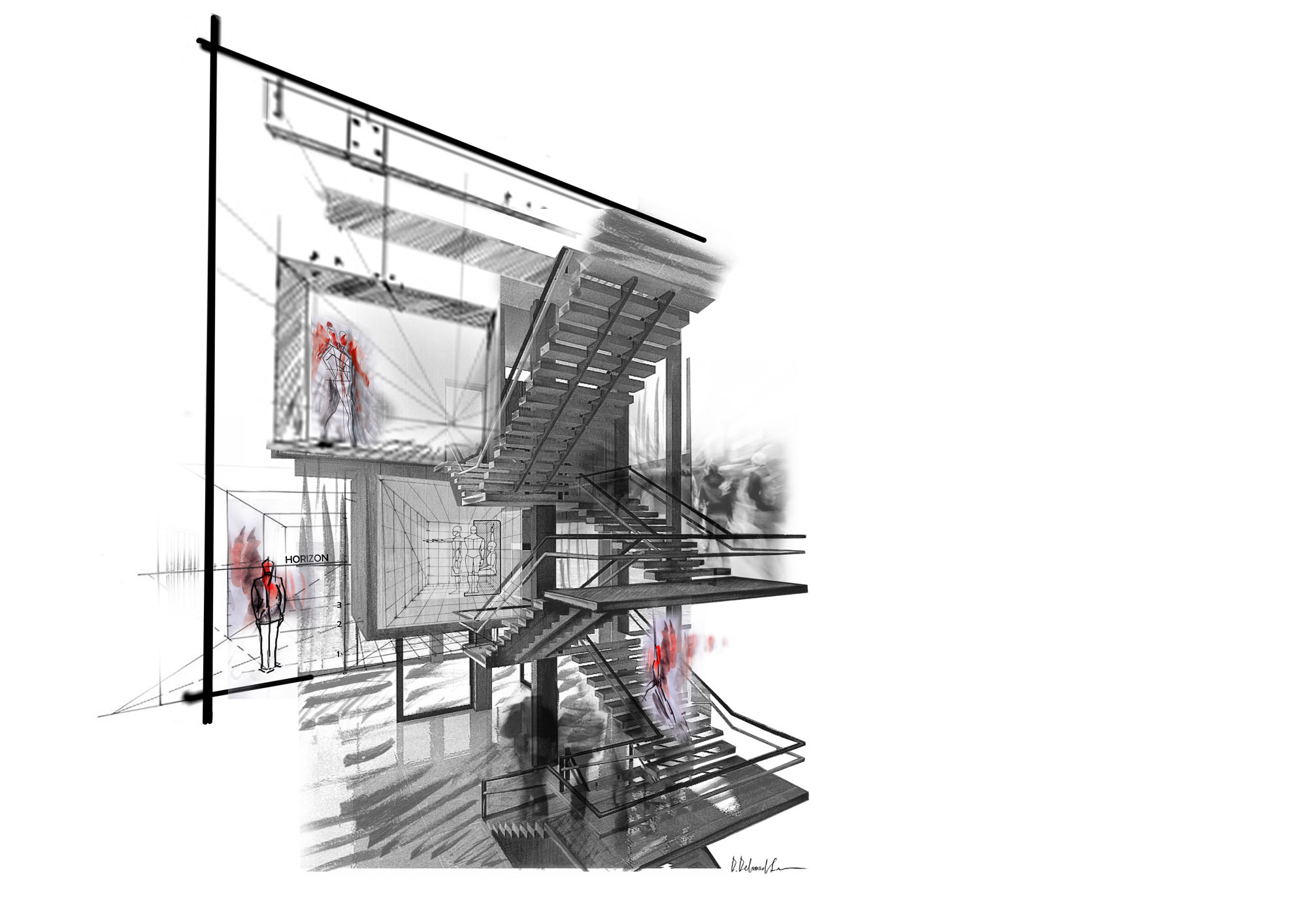
ABSTRACT
This article discusses the importance of perception of spaces and involvement with spaces during the design process. Over the last decade, mapping the relationship of architectural spaces to human experience has become popular as a successful design methodology. The beginning phase of the design process is characterized by perceptual integrity; unfortunately, this integrity often fades away or is even eliminated once the spaces become real and occupied.
The availability of advanced visual representation techniques has created a realistic clarity of visual experience in space. However, emphasis on the visual has resulted in the possibility that other sensory modalities will be ignored. The goal of the craft of architecture as a profession is to create experiential qualities. If well designed, an architectural space can effectively shape experiences and evoke feelings. This paper focuses on design processes and outlines a series of phenomenological arguments that arise in contemporary architecture. These arguments are presented through literature reviews, theoretical interpretation, and the building case studies that support findings. The purpose of this paper is to clarify the importance of imaginative perception in architecture and to demonstrate how ideas are developed for the creation of impressive architectural spaces.
Topmost image: The attempt to manifest architectural spaces as “lived” spaces arises from the fact that architectural spaces can act upon users by affecting their feelings and sensations. The act of “crafting” requires specific skills and knowledge on the part of its creator, as does architecture. Crafting architectural spaces requires architects to enhance their knowledge regarding the qualitative dimensions of the embodied experience. Like a theatrical producer, the architect plans the settings and articulates them during design processes. Mixed-Media Idea Sketch by Damineh Pegah Dehnadfar.
OBJECTIVES AND METHODOLOGY (a Summary)
Our knowledge about the overall quality of architecture is often restricted to functionality, planning principles, and technical conditions of the buildings. When we praise an architectural design, we immediately admire all sorts of theoretical and practical values, but hardly ever recognize the emotional quality involved in the entire process of architectural design. The power of a good architectural design lies in both its technical values and in the elusive qualities of creativity and perception. This article highlights the importance of considering the emotional qualities of architectural spaces, and of doing this early in the design process (Figure 1).

We often admire a work of handicraft art for the practical skills involved in its creation. However, a piece of fine craftsmanship also involves the abstract quality of artistic talent. Similarly, the craft of architecture is not just about writing specifications to set up standards of quality for the construction of a project. Craftsmanship in architecture also involves creativity and the imagination of the architect. Architects imagine the experiential quality of spaces and articulate them by utilizing aspects of sound, light, and colour. To put this in another way: architects craft spaces through perceiving the qualitative dimensions of experiences. Understanding the concept of “experience” and “experiential quality” involves a comprehension of human nature and its role in appreciating the quality of architectural spaces. This paper’s research methodology involves a literature review, as well as an examination of building case studies (Figure 2).

The collected works reviewed in this paper include theories related to memory, perception, and imagination and focus on the subject of phenomenological approach in architectural design processes. A literature review examines existing theories and gives insight into the potential role that re-imagining experiences can play in creating architectural spaces. In the beginning, this section provides a brief chronological background study of the tension between the human body and mind, and architectural spaces (Figure 3). Subsequently, it reviews qualitative dimensions of human experiences and explains how they make architecture meaningful (Figure 4). The last part describes the importance of memory and of the perception of users’ experiences during design processes in the creation of “memory places” (Figure 5). For the purposes of this paper, the term “memory place” refers to an architectural space with memorable spatial qualities.




The literature reviews presented in this article suggest that a profound architectural design provides more than merely accommodation, and can help shape and represent our experiences of life and human existence. The act of representing spatial experiences before a building comes into existence involves approaching the design process with imaginative skills, as architects cannot evaluate experiential qualities without first being able to predict their effects and outcomes.
The four selected building case studies (Figure 6) are presented to measure the potential benefits of involving the “imaginative mind” in the perception of spaces in architectural design processes. These case studies illuminate the importance of thinking about the living qualities of spaces very early in design explorations. What these four examples have in common is that, in the very early stages of design processes, the architects questioned the basic form and content of space from the perspective of users’ experiences. The review of selected projects interpret two different concepts of “memory places”: first, the concept of a memorable place as a highly stimulating environment that challenges users to come to terms with the intensity of their experience; and second, as a comfortable atmosphere that provides users with a sense of relaxation and sociability. In all examples, a series of imagined experiential qualities leads to the design of spaces that are more than just physical structures: they are places that affect the existential sense of users by engaging multisensory perception. The architects referred to in the examples consider users in the center of experiences and demonstrate how physical architectural spaces can be turned into lived spaces. 
"Crafting Architectural Experiences: Exploring Memory Places" originally appeared in Vol 08.02 of the Perkins+Will Research Journal. Click here to read the entire research paper.

